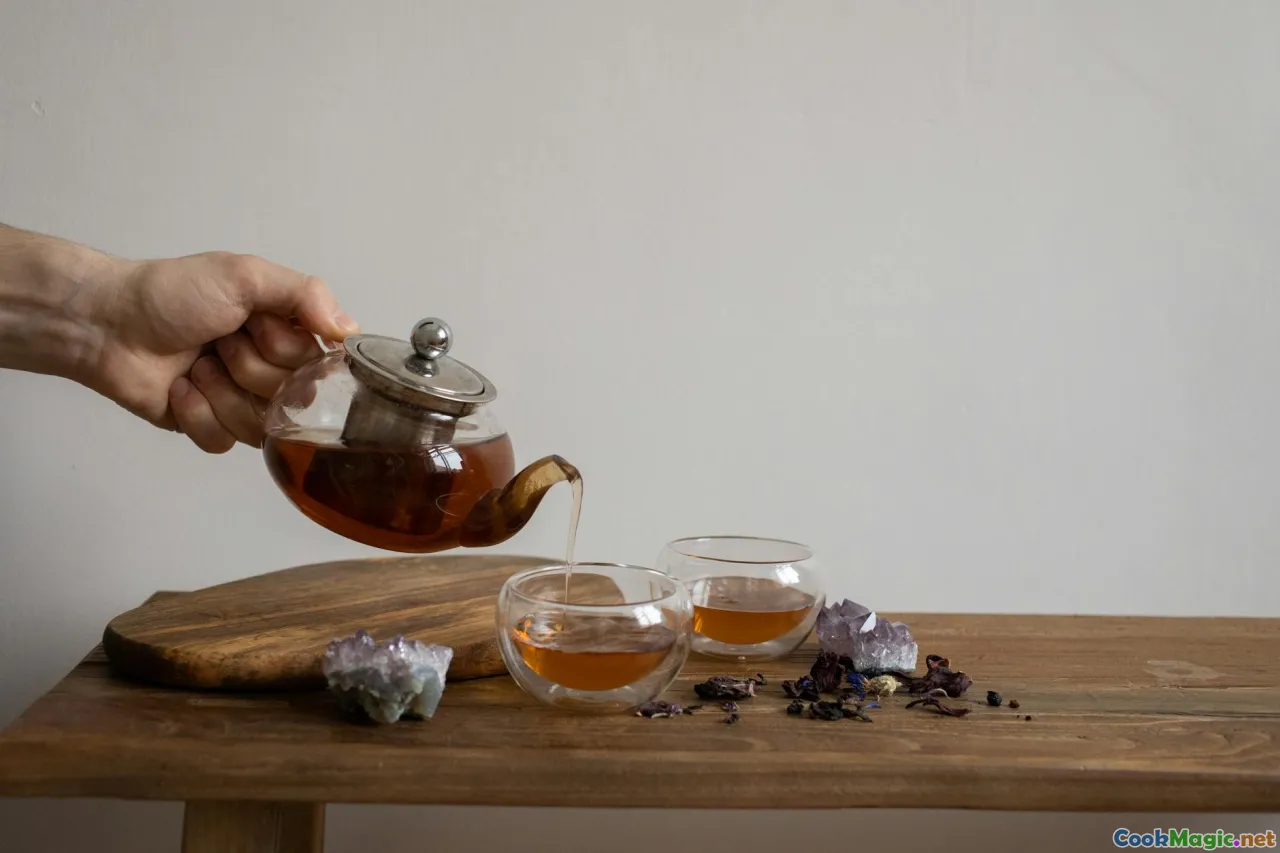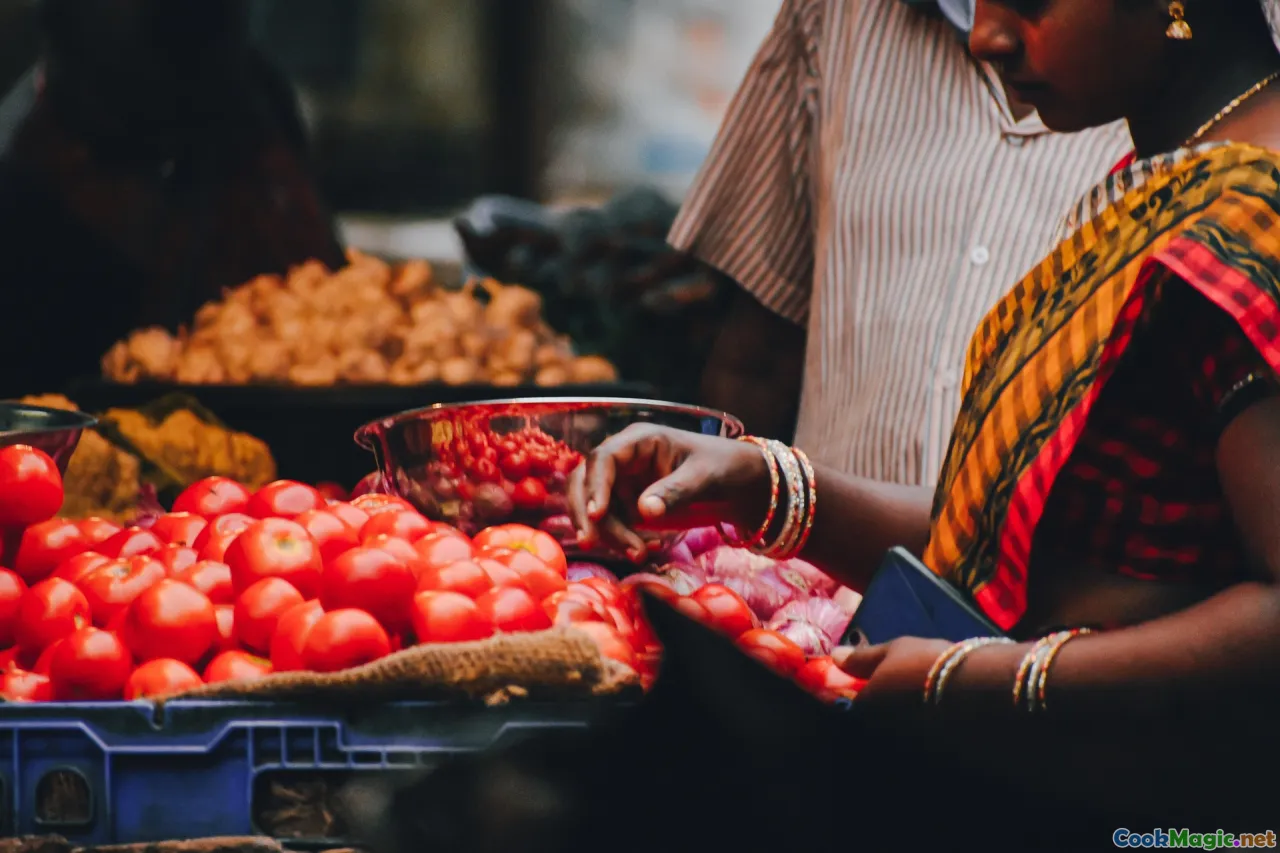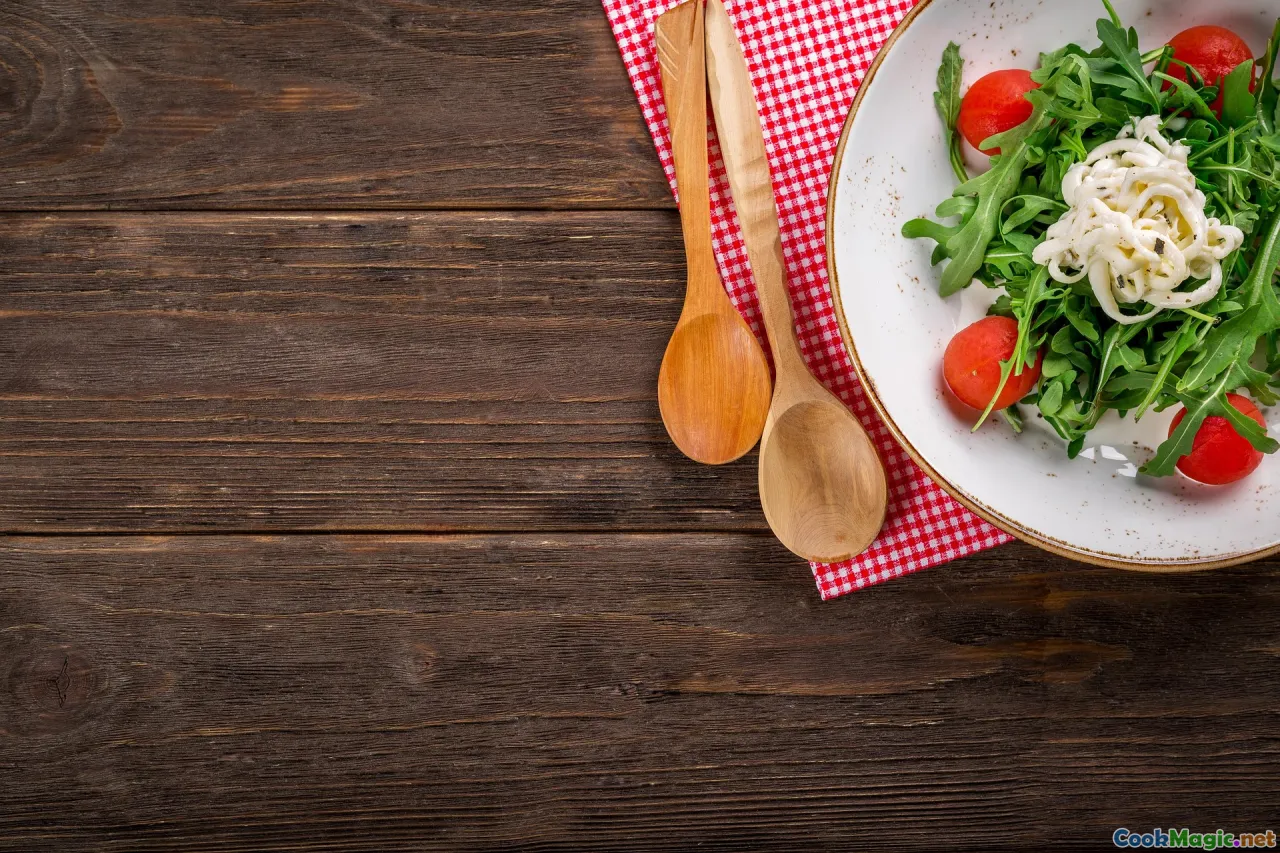Bringing Senegalese Street Food to Your Kitchen
44 min read Discover classic Senegalese street foods and easy techniques, from dibi grills to accara fritters and ndambe sandwiches, with pantry swaps, spice tips, and cultural context for home cooks. October 19, 2025 07:04
The first time I followed the salt-tanged breeze down the Corniche at dusk, Dakar taught me to listen with my nose. Charcoal hissed where a dibiterie fanned its embers—lamb fat hitting heat, turning to a whisper of smoke that smelled like pepper and pasture. A man in a knit cap threaded brochettes, the skewers clicking softly as he flipped them. Nearby, a woman with her hair wrapped in a wax-print scarf ladled brick-red tomato sauce over a paper cone of pastels—fried fish pies that snapped audibly when bitten. Along the curb, a boy poured attaya—the ritual green tea—back and forth between two glittering glasses to build a crown of foam. A call rose, sing-song and familiar: “Café Touba! Café Touba!” A thermos appeared. The lid clicked open, releasing a sugared, peppery perfume that I would later learn is Selim, the African spice that gives Dakar’s coffee its hush of clove and black-cardamom memory.
That night I ate standing up: an accara fritter sandwich slicked with spicy onion, a handful of frites dunked in sharp mustard, a sip of hibiscus the color of pomegranate jewels. By the time I turned back toward the sea, the city had rearranged my appetite. I didn’t want a restaurant; I wanted the street’s chorus. This is an attempt to take that chorus home—to bring Senegalese street food into the kitchen where you live, without losing its briny humor or its smoky heartbeat.
A Street’s Pantry You Can Build at Home

Street food is fast at the point of service because the flavor-building has already happened. In Dakar, that alchemy lives in a few key ingredients and techniques that stack into dishes like dominoes. Stock your pantry with these and you’ll be halfway to Sandaga Market before you’ve chopped an onion.
- Broken rice (riz brisé): The backbone of ceebu jën—Senegal’s beloved rice-and-fish dish—broken rice behaves like tiny pebbles that drink sauce while keeping their structure. Look for Vietnamese or Thai broken rice if West African brands aren’t available. Rinse until the water runs clear.
- Peanut oil: Engineered for high-heat frying with a grassy aroma that’s subtly nutty. When a dibiterie flares, you’ll smell this oil singing.
- Tomato paste: Deep-red, slightly metallic, and sharp. The trick is to caramelize it until it turns brick and sweet—the smell will shift from raw tin to roasted autumn.
- Dried seafood umami: Guedj (dried fish) and yét (a dried mollusk) are optional but classic in ceebu jën. When simmered, they release a haunting, tidal funk that is the memory of the Atlantic seamed into your stew. If unavailable, a dash of good fish sauce or a smear of miso can mimic the depth.
- Netetou (fermented locust bean): A smidge adds nutty, cheesy savoriness. It’s potent; think of it like anchovy paste for vegetarians. Powdered netetou is easiest to blend.
- Chilies: Scotch bonnet or bird’s eye for clean heat. Senegalese heat is often a background hum rather than a scream, but street food can flex. Keep a fresh piment on the side for those who ask.
- Citrus and mustard: Lemons and Dijon power the yassa school of cooking—long-cooked onions made breathing and bright. That face-puckering acidity is the snap in so many sandwiches.
- Fresh herbs: Parsley, green onion, and sometimes a handful of mint. They are beaten into nokoss, the green paste that anchors meats and fish.
- Staples for drinks: Dried hibiscus calyces for bissap; baobab fruit powder (bouye) for creamy-tart juice; fresh ginger for the kick-you-awake gingembre. Gunpowder green tea and sugar for attaya; Selim pepper (djar) and cloves for café Touba.
One more essential, though not edible: a reliable, heavy pan. Cast iron or a carbon-steel skillet will mimic the ferocious heat of curbside braziers better than a nonstick. A small tabletop grill or a grill pan helps bring dibi—the grilled-meat culture—into your home.
Techniques That Turn Ingredients Into Dakar

Senegalese street cooking is a choreography of a few smart moves.
- Nokoss: A hand-beaten green paste of onion, garlic, green onion, parsley, black pepper, and chili. Often a stock cube slips in; at home, lean on salt and a teaspoon of fish sauce if you prefer to skip cubes. Nokoss is what sneaks into the flesh of fish or lamb, where it caramelizes and perfumes every bite.
- Rof: A cousin to nokoss, rof is specifically for stuffing fish steaks in ceebu jën. Add a little mustard and lemon zest to your nokoss and you’ve made rof.
- Caramelized tomato paste: Fry it in peanut oil until it shifts from sharp red to chestnut brown. The kitchen will smell like caramelized sugar tinged with sun-dried tomatoes. That is the base of many sauces and of red ceebu jën.
- Onions, onions, onions: Yassa, the glory of Casamance in the south, rests on a mountain of onions slow-cooked with mustard and lemon. Think confit meets vinaigrette. You’re aiming for jammy brass, not crisp. The steam that lifts from the pot smells like a brasserie met a citrus grove.
- One-pot layering: In ceebu jën, you fry the paste, bloom the tomato, simmer fish and vegetables, then pull them out and cook the rice in the same liquid. The rice borrows all the sauce’s stories; a final steam dries it into grains that sigh apart.
- The pour: Attaya must be poured high to aerate and build foam. In the street, a vendor will polish this to theater. At home, you can practice with an old mug and two glasses—and a towel.
If you have a mortar and pestle, use it for nokoss. The slow crush bruises herbs and releases oils in a way a food processor whirs past. If not, a processor works; pause to scrape, and add a teaspoon of water if the blades sulk.
Accara and the Street’s Most Democratic Sandwich

A vendor at Marché Sandaga once slid an accara sandwich into my hand, and the heat of it seemed to arrange my fingers into gratitude. The fritters—black-eyed peas puffed and salted—were tucked into a baguette that had a husky crackle. Over it, she spooned a tomato-chili sauce that tasted like a summer garden shouting in Wolof.
Here’s how to build that sandwich at home.
Accara (Black-Eyed Pea Fritters)
Ingredients:
- 2 cups dried black-eyed peas (buy peeled if you can; otherwise, you’ll peel them)
- 1 small onion, roughly chopped
- 2 cloves garlic
- 1 Scotch bonnet or bird’s eye chili, stemmed (seeded if you prefer less heat)
- 1 teaspoon kosher salt, plus more to taste
- 1/2 teaspoon baking powder (optional, for lift)
- 1/2–3/4 cup cold water, as needed
- Peanut oil, for frying
Method:
- If your peas aren’t peeled, soak them in water for 1 hour, then rub vigorously between your palms. The skins slip off like wet paper. Rinse and repeat until most skins float and pour off. Don’t fuss over perfection.
- Blend the peas with onion, garlic, chili, salt, and just enough cold water to move the blades. You want a thick, spoonable paste. If using baking powder, fold it in.
- Heat 1 1/2 inches of peanut oil in a deep skillet to 350°F (175°C). Spoon in dollops of batter—walnut-sized. They’ll swell, their edges frilling. Fry until deep golden, 3–4 minutes per side. Drain on paper and salt while warm.
Tomato-Chili Sauce (the street’s red silk):
- 2 tablespoons peanut oil
- 1 small onion, minced
- 2 cloves garlic, minced
- 2 tablespoons tomato paste
- 1 cup tomato purée (or crushed tomatoes)
- 1–2 Scotch bonnets, pierced with a knife (leave whole for gentle heat)
- 1 teaspoon sugar
- 1 tablespoon white vinegar or lemon juice
- Salt to taste
Cook the onion and garlic in oil until translucent. Add tomato paste and fry until brick colored and sweet, smelling like roasted tomatoes. Stir in purée, chilies, sugar, and a pinch of salt. Simmer 10–15 minutes until thick. Finish with vinegar. Fish out the whole chilies if you don’t want a surprise.
Assembly:
- Fresh baguette with a rustic crust (Senegal owes its love of baguettes to French colonial influence; the bread has become joyfully local)
- A few lettuce leaves or sliced tomatoes (optional)
- Accara fritters
- A generous spoon of red sauce
Split the baguette, pack with fritters, drizzle with sauce, add a leaf or two for crunch. Eat with the unguarded hands of the hungry. The first bite is cloud and thunder: crisp shell, saffron-tinted earthiness of peas, sweetness followed by chili bloom, the crumb of bread like a cotton field under sun.
Cook’s note: Accara batter can be made a few hours in advance; keep it cold. The sauce keeps a week in the fridge and also loves pastels (fish pies) and fried yams.
Dibi at Home: Grilled Lamb the Way the Night Smells

Dibi is the soul of many Dakar nights: lamb, salt, smoke, mustard. In dibiteries, lamb shoulders and chops meet a hot grate, and the vendor applies nokoss and salt with instinct instead of measures. On the sidewalk, everyone eats with fingers, the night shimmering with the softedged sound of people tearing meat.
At home, a grill pan or charcoal grill will do. If you love precision, a thermometer helps. If you love chaos, open the window and trust your nose.
Dibi-Style Lamb Chops with Onion-Mustard Dip
Nokoss for the meat:
- 1 small onion, roughly chopped
- 3 cloves garlic
- 2 green onions
- 1 small bunch parsley
- 1/2 Scotch bonnet, seeded (optional)
- 1 teaspoon black pepper
- 1–1 1/2 teaspoons kosher salt
- 1 tablespoon peanut oil
Blend or pound to a paste.
Lamb:
- 2 pounds lamb shoulder chops or loin chops
- Additional salt
- Peanut oil for brushing
Onion-Mustard Dip:
- 2 onions, thinly sliced
- 2 tablespoons peanut oil
- Juice of 1 lemon
- 1–2 tablespoons Dijon mustard
- Salt to taste
Method:
- Rub the lamb with nokoss. Marinate at least 1 hour or up to overnight.
- For the dip, soften the sliced onions in oil over medium heat until wilted but not browned, 10–12 minutes. Stir in lemon juice, mustard, and salt to taste. The result should be bright enough to make your jaw lean forward.
- Heat your grill or grill pan until a drop of water skitters like mercury. Lightly oil the lamb; season with a pinch more salt. Sear 3–4 minutes per side for medium; let rest.
- Serve with the onion-mustard dip, a heap of hot fries, and a baguette. In Dakar, there is often a small bowl of mouth-wakening mustard on the side; emulate it with straight Dijon or Dijon thinned with a drip of oil and lemon.
Variation: If you can find liver and suet, thread alternating pieces onto skewers for brochettes that eat like velvet and smoke. Brush with nokoss as they cook; think of the paste as both marinade and baster.
Ceebu Jën for Two: Saint-Louis in a Single Pot

Legend says the dish was born in Saint-Louis in the 19th century, where a cook named Penda Mbaye simmered fish with tomato and rice when broken rice began arriving by ship. The idea is simple and radical: the rice doesn’t sit beside the fish; it becomes the fish’s memory.
Here’s a streamlined ceebu jën—red style—for a small kitchen.
Ingredients:
- 2 thick fish steaks (mackerel, bluefish, or sustainable farmed striped bass; traditional “thiof,” a grouper, is overfished—choose well)
- Nokoss/rof:
- 1/2 small onion
- 2 cloves garlic
- 1 handful parsley
- 1 green onion
- 1 small chili
- 1 teaspoon black pepper
- Zest of 1/2 lemon
- 1 teaspoon Dijon mustard
- 1 teaspoon salt
- 1/4 cup peanut oil
- 2 tablespoons tomato paste
- 1 small onion, sliced
- 2 cloves garlic, minced
- 1 tomato, chopped
- 1 bay leaf
- 1 teaspoon netetou powder (optional)
- 1 small piece guedj and/or 1 yét (optional)
- Vegetables (traditional mix; choose 4–5): 2 carrots (chunked), 1/2 small cabbage (wedged), 1 small eggplant or 3 Thai eggplants (halved), 1–2 okra pods, 1 small cassava or potato (peeled, chunked), 1 turnip (quartered)
- 1 1/2 cups broken rice, rinsed until clear
- 3–4 cups water
- Salt
- Lemon wedges and fresh chili for serving
Method:
- Make the rof by pounding or blending the rof ingredients. Use a small knife to make a slit in each fish steak and push in a spoonful of rof. Rub the rest over the fish.
- Heat the peanut oil in a wide pot. Add the sliced onion and garlic; cook until translucent. Add tomato paste; fry, stirring, until it turns from raw red to a rusty brown—it will smell sweet and savory. Add chopped tomato and cook until it collapses.
- Slip in guedj/yét if using, bay leaf, and netetou. Add 3 cups water and a generous pinch of salt; bring to a simmer.
- Gently lower the fish steaks into the sauce with the firmer vegetables (carrot, turnip, cassava/potato). Simmer 10 minutes. Add cabbage, eggplant, and okra. Simmer until all vegetables are just tender, about 10–12 minutes more. Taste the broth—it should be oceanic, tomato-rich, and rounded. Adjust salt.
- Carefully lift out fish and vegetables and keep warm. You now have what Dakar calls “sauce”—the universe you’ll cook the rice in.
- Rinse rice again. Stir into the simmering sauce. You want the liquid level just above the rice; add water if needed. Cook uncovered at a lively simmer until most liquid is absorbed and small steam holes form, 10–12 minutes.
- Reduce heat to low, cover with a tight lid (wrap it with a kitchen towel for a snug seal if needed), and steam 10–12 minutes. If your pot allows, scrape the bottom lightly with a spoon for a few crunchy grains—the prized xoon, caramelized rice.
- Fluff the rice, mound it on a platter, drape with vegetables and fish. Spoon a little sauce over. Serve with lemon wedges and a fresh chili to crush over your portion.
The first forkful should taste like a dock at noon—tomato and tide, the sweetly bitter throb of cabbage, the satisfying chew of broken rice that has learned the language of sauce.
Home cook’s note: Don’t be tempted to drown the rice. As with pilaf, restraint keeps the grains separate. And don’t skip the rof; even a quick paste makes the fish bloom.
The Casamance Way: Yassa in a Skillet (and in a Sandwich)

Yassa comes from Casamance in the south, where the Gambia River winds through mangoes and rice paddies. It is a dish of patience and punch: onions slow-cooked until they sweet-talk, sharpened with lemon and mustard until they sing. On the street, you’ll find chicken pieces or fish glazed with those onions, sometimes tucked into bread. It’s the Senegalese answer to the eternal question: what if French onion soup were an extrovert?
Yassa Chicken, Skillet Style
Ingredients:
- 6–8 chicken thighs or drumsticks
- 4–5 large onions, halved and thinly sliced
- 4 cloves garlic, minced
- 1/3 cup lemon juice (plus more to taste)
- 2 tablespoons Dijon mustard
- 1–2 Scotch bonnets, slit (optional)
- 1/3 cup peanut oil (divided)
- Salt and black pepper
- 1 bay leaf
Method:
- Marinate the chicken 1–2 hours with half the lemon, half the mustard, 1 tablespoon oil, salt, pepper, and half the garlic.
- Sear the chicken in a wide skillet in a slick of oil until browned. Remove.
- Add remaining oil and all the onions. Salt lightly. Cook slowly, stirring occasionally, until the onions collapse and caramelize into a golden tangle, 20–30 minutes. Add remaining garlic; cook 1 minute.
- Stir in remaining lemon, mustard, bay leaf, and chilies if using. Nestle the chicken back. Add a splash of water if needed. Simmer until chicken is tender and saucy.
- Taste. Yassa should make your mouth water before you swallow. Adjust salt and lemon.
Serve with rice—broken rice if you’re in the groove—or stuff into a baguette for a sandwich with crunching crust and sweet-tart onion lava within.
Tip: If you’re turning this into street-style sandwiches, smear the bread with a little extra mustard and add sliced tomato. The acidity and the cold bite of tomato behave like a cymbal crash in the onion orchestra.
Sweet, Sharp, and Spiced: Bissap, Gingembre, and Café Touba

Street food is a performance, and drinks are the intermission. The colors alone seduce: bissap is ruby and catches light like a carnival bead; ginger juice is pale gold but behaves like a sparkler; café Touba is midnight, sweet and smoky, poured from a thermos with a wink.
Bissap (Hibiscus Cooler)
Ingredients:
- 2 cups dried hibiscus calyces
- 8 cups water
- 1–2 cups sugar (to taste)
- 1 teaspoon vanilla extract or a piece of vanilla bean (optional)
- A few mint sprigs (optional)
- Slices of pineapple or a splash of pineapple juice (optional but lovely)
Bring water to a boil. Turn off heat, add hibiscus, and steep 15 minutes. Strain; sweeten while warm. Add vanilla and pineapple if you like. Chill. Serve over ice with a mint sprig. The first sip is tart like a cranberry dared into a tango.
Gingembre (Ginger Juice)
Ingredients:
- 8 ounces fresh ginger, peeled and chopped
- 6 cups water
- 1/2–3/4 cup sugar (to taste)
- Juice of 1–2 lemons
- Optional: a pinch of cayenne for a slow heat that sneaks up
Blend ginger with 2 cups water. Strain through a fine sieve or cloth, pressing hard. Add remaining water, sugar, and lemon. Chill. It should hit the back of your throat like a well-told joke.
Café Touba (Spiced Coffee of the Mouride Streets)
Café Touba is intertwined with the Mouride brotherhood and with work itself; it is coffee as devotion and stamina, sweetened heavily, spiced with Selim pepper (djar) and often clove. Vendors carry it in thermoses, and the moment you hear “Café Touba,” it’s as if your day puts on a clean shirt.
Home Version:
- 6 tablespoons medium-coarse ground coffee (dark roast)
- 1/2–1 teaspoon ground Selim pepper (or lightly crushed whole pods; start small—this spice blooms)
- 1–2 cloves
- 3–4 cups hot water (just off boil)
- Sugar to taste (traditionally generous)
Place coffee and spices in a French press. Add water, stir, steep 4 minutes, press. Sweeten warmly. The aroma will be cocoa-meets-camphor, the taste like coffee that remembers the forest.
Attaya: The Three-Act Tea That Stops Time

Attaya is the West African tea ritual you will most often see played out at curb level: a small kettle, gunpowder green tea, a precarious dance of glasses. It’s done in three rounds—bitter, better, and best, as a friend in Medina told me—with sugar increasing each time, foam rising higher. In Senegal, it’s social glue. You don’t rush attaya. You decide to be there, and being there becomes the point.
How to Attaya at Home:
- Bring 2 cups of water to a boil in a small pot. Add 2 tablespoons gunpowder green tea; boil briefly, 1 minute. Strain into a teapot or heatproof pitcher.
- Return the liquid to the pot with 3–4 tablespoons sugar; bring to a simmer. Pour from pot to glass and back again, lifting the pot high to aerate and cool, building foam. Taste: strong, bitter-sweet. This is the first glass.
- For the second, add another 1/2 cup water and 2–3 tablespoons sugar to the pot with the tea leaves you reserved. Simmer, pour, foam again. It will be rounder, friendlier.
- For the third, repeat with another whisper of water and more sugar; sometimes mint slips in. The last glass should be gentle enough that you forget to check your phone.
Tips:
- Use small glasses; attaya is not a tankard drink. It’s about repetition.
- The foam matters. It signals attention and skill. If you don’t get towering foam, don’t fret. You’re still in the ritual.
A Sensory Map of Markets: Sandaga, Kermel, Soumbédioune

Marché Sandaga in central Dakar is all thrum and bargain—the kind of place where a bunch of parsley smells like a garden that learned how to hustle. Here, I learned that tomatoes, when stacked in pyramids, smell more like tomatoes, and that tomato paste can be debated like politics.
Marché Kermel, with its iron-arched roof, feels like a novel from the 1890s wrote itself a makeover. The fish gleam as if they’ve been polished. I saw a woman buying guedj and she smiled as if letting me in on a secret; dried fish smells like a memory of rain when tucked into a paper bag.
At Soumbédioune fish market, evening becomes theater. Pirogues slide in, the day’s catch thumping onto tables. Sea urchins have the wet-metal smell of tide pools; mackerel lie like ingots. Vendors shout prices in Wolof and French, and somewhere behind it all, a grill starts, because someone, somewhere, is always about to eat.
If you can’t go, build your own map: your local West African grocer for netetou and hibiscus; the halal butcher for lamb; the Asian market for broken rice and fish sauce when guedj is elusive. Let your grocery list be a passport.
Street Sweets and Soft Landings: Thiakry and Ngalakh

After spice and smoke, sweetness lands like a lullaby. Thiakry—also called dégué—is millet couscous folded into sweetened cultured dairy, often perfumed with vanilla and nutmeg. It’s sold in plastic cups beside the road, a pale, speckled comfort.
Quick Thiakry at Home:
- 2 cups fine millet couscous (or “degue” grains)
- 2 cups milk
- 2 cups plain yogurt or lait caillé (sub kefir)
- 1/2 cup sugar (to taste)
- 1 teaspoon vanilla extract
- 1/4 teaspoon grated nutmeg
- Pinch of salt
- Optional: raisins, shredded coconut, a scatter of chopped toasted peanuts
Steam or cook millet couscous per package. Cool completely. Whisk milk, yogurt, sugar, vanilla, nutmeg, and salt. Fold in the grains and optional add-ins. Chill deeply. The texture should be spoon-coatably thick, cool against heat-buzzed lips.
Ngalakh, tied especially to Easter among Senegal’s Christian communities, weaves millet with baobab pulp and peanut paste. It tastes like a field and a forest were invited to dessert. Its street-life is more seasonal, but if you find baobab powder (bouye), fold a couple tablespoons into your thiakry and stir in a spoonful of peanut butter; you’ll be in the neighborhood.
Substitutions and Sustainability: Cooking with the Coast in Mind

Senegal’s national fish “thiof,” a noble grouper, has been pressed by overfishing. If you cook ceebu jën at home, choose resilient species: Atlantic mackerel, bluefish, sardines, or farmed striped bass. Their oiliness plays beautifully with tomato’s acidity, and their assertive flavor won’t vanish amid nokoss and guedj.
If netetou is elusive, a teaspoon of white miso or a few drops of fish sauce in a pot of ceebu jën can hum in the same register. No yét? Skip it; better to cook honestly than to fake perfume with too much umami. For African eggplant (jat), Thai pea eggplant or small Italian eggplant can mimic texture, though bitterness will soften. Cassava can be swapped with Yukon golds; okra is important for its glazed, gentle body in the sauce—don’t skip unless you must.
For bread, a good baguette with a crackling crust is ideal; if your bakery trends soft, crisp the bread briefly in a hot oven before building sandwiches. Tapalapa, the dense, beloved bread of Senegambia, is hard to find abroad; a hearty country loaf is an honorable stand-in.
Ethics, too, are part of flavor. Cook in tune with what your market can bear, and the street—thousands of miles away—will still approve.
A One-Night Street Menu for Home, with Timeline

This is how I run a Dakar-in-my-kitchen night for six. It’s a party built to eat with fingers, puzzle-pieced from make-ahead bits.
Two Days Before:
- Make nokoss and freeze half for later. You’ll use the rest in dibi and ceebu jën.
- Brew a bottle of ginger juice (gingembre) and a bottle of bissap. Chill.
One Day Before:
- Make tomato-chili sauce for accara/pastels. It tastes better after an overnight rest.
- If serving thiakry, cook grains and chill; mix the dairy base separately.
- Buy fish and lamb; check your charcoal or season your grill pan.
Morning Of:
- Marinate lamb in nokoss.
- Soak and peel black-eyed peas for accara; keep submerged in fridge.
- Make yassa onions if you want an extra sandwich station; warm gently before serving.
Evening:
- Start ceebu jën—fry tomato paste, simmer fish and veg, then cook rice. Keep warm in the pot.
- While rice steams, fry accara; keep batches warm in a low oven.
- Grill dibi lamb chops; tent to rest.
- Spoon thiakry and chill again.
- Arrange a street counter: baguettes, bowls of sauces (red tomato, mustard-onion from dibi, yassa onions), a small bowl of raw sliced chilies for the brave.
- Pour gingembre and bissap over ice in short glasses; keep café Touba for the wind-down.
Serve ceebu jën on a communal platter if your crowd is game; it’s how it’s most often eaten—shared from the edges inward. I like to call out “Bismillah!” before we dig in, as I’ve heard on Dakar sidewalks, a blessing that tastes like community.
Common Pitfalls and How to Fix Them

- My tomato sauce tastes metallic. Fix: Fry the tomato paste longer. You want it to darken and sweeten; scrape the fond. Add a pinch of sugar and cook a few minutes more.
- My accara fritters are dense. Fix: Blend the batter thoroughly; it should be airy. Add a pinch of baking powder or whip in a tablespoon of cold water just before frying. Oil too cool also makes dense fritters—aim for 350°F.
- My ceebu jën rice is mushy. Fix: Rinse rice more; control liquid. Keep it just above rice level. Steam covered at the end; don’t stir once you’ve added rice until steaming time is done.
- My dibi tastes flat. Fix: Salt matters—season before and after grilling. Don’t be shy with nokoss. And rest the meat; juices need to gather themselves.
- My yassa is too sour. Fix: Onions should balance acid with sweetness. Cook them longer to coax sugars. Stir in a teaspoon of sugar if needed and a knob of butter to round things off.
- My attaya has no foam. Fix: Practice the pour. Cool slightly before pouring to encourage bubbles. Adding a touch more sugar can help structure.
Language and Little Gestures: A Tiny Wolof Lexicon for Cooks

- Jërëjëf: Thank you. Say it to the person who sells you parsley. Say it to the lamb.
- Nopp naa la: I miss you. Useful, surprisingly, for recipes you haven’t cooked in a while.
- Ceebu jën: Rice with fish, the national dish. Say “cheh-boo jen.”
- Yassa: Onion-lemon-mustard magic. Works with chicken (yapp), fish (jën), or mutton (ker).
- Dibi: Grilled meat, especially lamb. A dibiterie is where the smoke comes from.
- Attaya: Three-round tea. If invited, sit.
- Bissap: Hibiscus juice. Red like a stoplight that always says go.
- Bouye: Baobab fruit pulp. Tangy, soft, wise.
- Nokoss/Rof: The green paste that makes meat and fish honest.
Little gestures matter: Always offer a squeeze of lemon and a fresh chili with ceebu jën; it lets each eater tune their plate. Don’t pre-sauce sandwiches too heavily; let people add more as they please. And if you share from a communal platter, eat the section closest to you—lean in, but not too far. The etiquette is part of the meal’s pleasure.
A Night in Saint-Louis: The Lantern and the Lamb

In Saint-Louis, where colonial balconies lean over narrow streets and the river rehearses for the sea, I once ate at a dibiterie with a lantern swinging above the grill. The meat arrived in a paper bundle, its grease leaving hieroglyphs on the wrapper. The vendor set down a jar of mustard older than my pronouncing of Wolof and a plate of sliced onions that smelled like thunderclouds and lemon peel. A wrestling match—a laamb—hummed from a nearby TV, the crowd’s roar spiking with each feint and throw. Two boys passed, selling attaya out of a kit that looked like a chemistry set made of tin.
If food is a document, street food is marginalia: the notes jotted in cusps of days, the edits that happen when hunger meets flame. I took a bite, and the fat from the lamb sweetened the char. The mustard pulled the mouth forward and the onion’s softness held it there. Somewhere a father told his son to watch the match, and somewhere a mother, balancing a tray, laughed at a joke I’ll never hear in full. I think this is why we cook from elsewhere: not to copy, but to eavesdrop with respect.
Bringing It All Together in Your Kitchen

When I return from Senegal, what lingers is not a single recipe but a way of arranging heat and time. The street teaches economy: build flavor once, spend it twice. Nokoss anchors dibi today and ceebu jën tomorrow. Tomato paste caramelized for accara sauce turns, with a handful of okra and fish, into lunch. The leftovers of yassa onions make a midnight sandwich that tastes like a secret you told yourself.
Cook with the windows open if you can. Let your neighbors smell the lamb and the hibiscus. Invite them. Put the bissap on the table and the ginger juice in the fridge door for people to find. Pour café Touba when the night gets small and the conversation big. Practice the attaya pour until your glasses wear little crowns. And don’t flinch from salt, acid, or smoke; they’re how Senegal speaks across a pan.
If you want to be truest, serve ceebu jën on a platter and let people lean in. Pass lemon and chilies as if they were punctuation. Keep the first bites hot and the last sips sweet. Thank the cook, even if it’s you. Thank the fish, even if it swam somewhere you have never seen.
One night, months after Dakar, I made accara for friends. The tomato sauce bubbled in a copper pot; the oil sighed as the fritters puffed. Somebody arrived with a loaf that crackled when pressed. We ate standing up, the way the street taught me, and for a minute the room smelled like the Corniche at dusk. A car passed outside, playing a song I didn’t recognize, and it felt like a city saying, Yes. You can bring me home. You already have.









